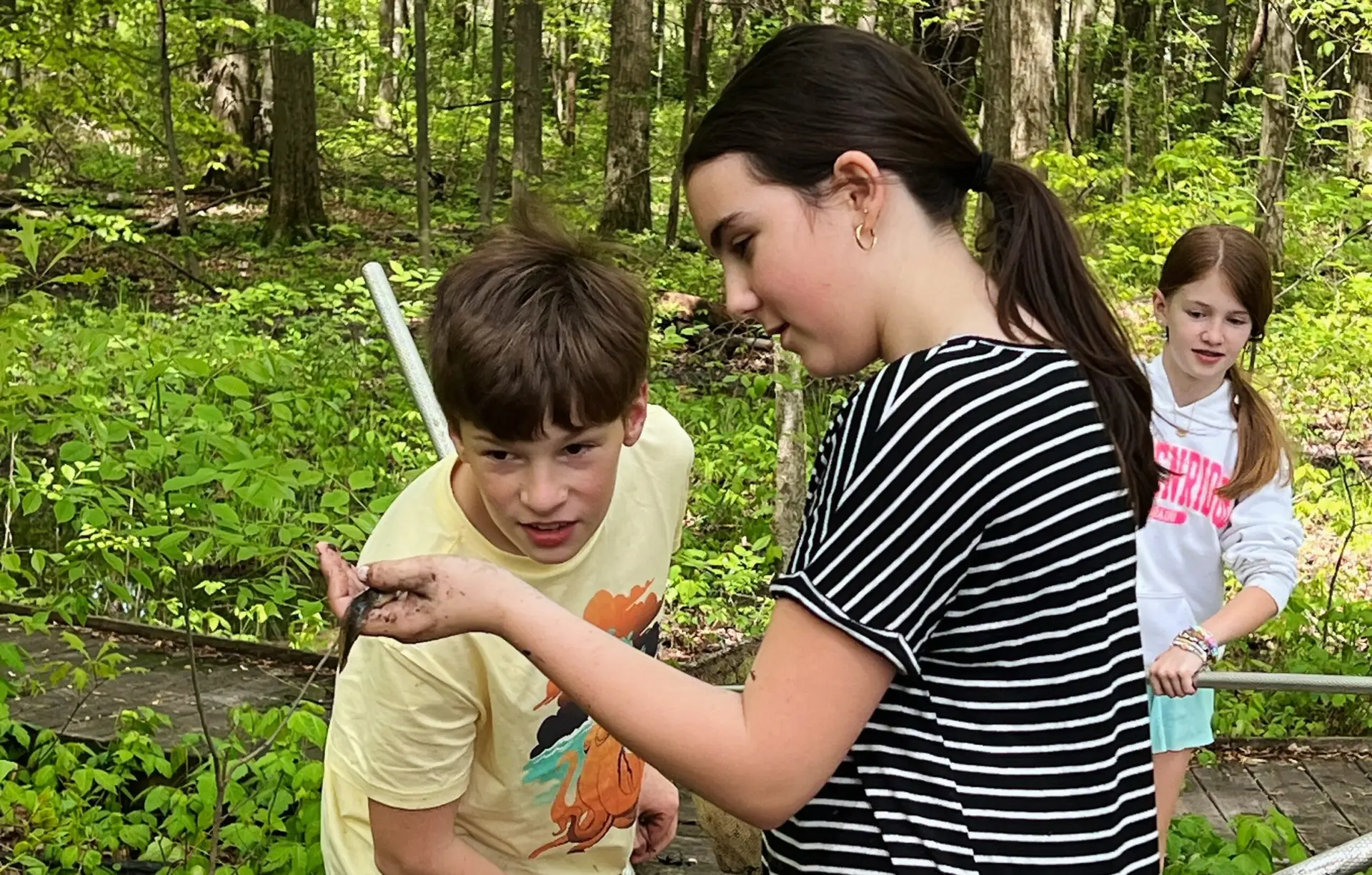Nestled within the many parks and green spaces of New Albany is a network of vital ecosystems: its wetlands. Often overlooked, wetlands are abundant with life and play a crucial role in our local environment. Through Healthy New Albany’s nature programming, including adult, youth, and family programs, discover the tiny wonders of these watery landscapes and catch a fascinating glimpse into one of the most intriguing features – vernal pools.
A “vernal pool” is an ephemeral body of water, meaning it appears seasonally in our native habitats. At first glance, these shallow pools may look like mere puddles. However, these unique bodies of water host the young of a bunch of native species including salamanders and frogs. Unlike permanent ponds or lakes that are connected to larger water systems, vernal pools fill with rainwater and melting snow during the late fall, winter, and spring. They do not have larger predators like fish, creating the perfect conditions for spawning.
Nature program participants often find tadpoles and other critters while exploring the pools.. Tadpoles play a significant role in our ecosystem, munching on algae and detritus, acting as natural cleaners and regulating nutrient levels in the water. As they mature and start to grow their legs, some tadpole species like the American Toad (Anaxyrus americanus) and the Wood Frog (Lithobates sylvaticus), become omnivorous or even carnivorous, consuming insects and other invertebrates. On the flip side, the tadpoles are a food source for birds, snakes, turtles, and other larger wildlife, proving that no matter how big or small, every being has a place in balancing the food web.
Much of Healthy New Albany’s wetland programming takes place in the New Albany Nature Preserve, 86-acres of protected wetlands, streams, meadows, and forest. Located within walking distance of the school campus, the preserve has become a living outdoor classroom for students and community members alike, offering hands-on opportunities to study and experience Ohio’s native habitats up close.
“Exploring our wetlands helps us all feel more connected to our local habitat,” says Healthy New Albany’s Nature Program Coordinator Kelli Pence. “We hope that by seeing these pools firsthand, kids and adults will appreciate their beauty and want to protect them.”
Pence shares that there are several ways we can keep our wetlands clean, including:
- Conserving Water: Less water usage reduces the strain on all aquatic ecosystems, including wetlands.
- Minimizing Chemical Use: Avoid or reduce the use of fertilizers, pesticides, and herbicides in your garden and around your home, as these can runoff into wetlands and harm wildlife and water quality.
- Ensuring Proper Waste Disposal: Never dump trash, chemicals, or pet waste into or near wetlands or storm drains that lead to them.
- Planting Native Species: When landscaping, choose native plants that are adapted to local conditions and support native wetland wildlife. Avoid invasive species that can outcompete native wetland vegetation.
From guided walks through local trails to after school programs for kids of all grade levels, Healthy New Albany’s nature programs foster a deeper appreciation for our natural environment and empower individuals to become active participants in its conservation. To learn more about our programs, visit www.healthynewalbany.org/programs.

